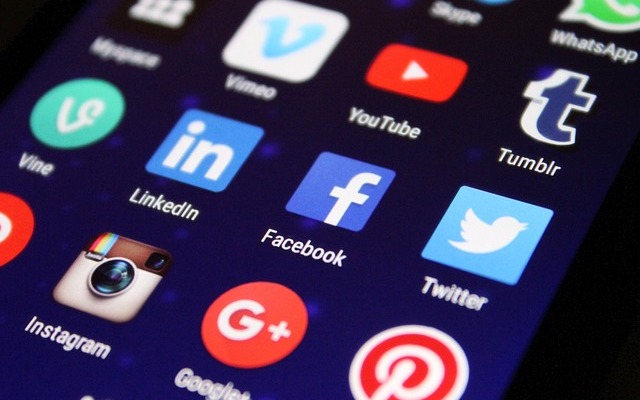6 Ways to Reduce Loneliness in the Digital Age
Published on

Loneliness is a growing concern in today’s digital age, where we are more connected than ever through technology, yet many people still feel isolated. The paradox of being digitally connected yet emotionally distant is a defining challenge of our time. Digitalization has reduced everyday social interactions—think of ATMs replacing bank tellers, self-checkouts replacing cashiers, and digital assistants like Alexa being suggested as companions for the elderly. While technology offers incredible opportunities for connection, it can also contribute to loneliness if not used mindfully. Understanding this context is crucial as we explore practical ways to reduce loneliness while navigating the digital landscape.
Below, I’ve outlined six evidence-based strategies to help you reduce feelings of loneliness in the digital age. These approaches balance the use of technology with real-world interactions and self-care, ensuring a holistic approach to combating loneliness.
1. Set Healthy Digital Boundaries
Excessive screen time can reduce opportunities for meaningful in-person interactions and contribute to feelings of isolation. Setting boundaries around technology use is essential for maintaining a healthy balance.
Why it works: Studies show that excessive screen time, particularly on social media, can lead to feelings of inadequacy and loneliness due to the pressure of curated online lives. Limiting screen time allows for more time spent on offline activities that foster deeper connections.
How to do it:
- Designate "tech-free" zones or times, such as during meals or before bed.
- Use apps or tools to track and limit your screen time.
- Prioritize offline activities like hobbies, exercise, or spending time with loved ones.
2. Leverage Technology for Meaningful Connections
While technology can contribute to loneliness, it can also be a powerful tool for staying connected, especially when physical meetings are not possible.
Why it works: Video calls and online communities can help maintain social ties, particularly for those who are geographically distant or unable to meet in person. Research suggests that video calls can reduce loneliness, especially among older adults, though the evidence is mixed and more studies are needed.
How to do it:
- Schedule regular video calls with friends and family.
- Join online communities or forums based on your interests to foster a sense of belonging.
- Use social media intentionally—focus on quality interactions rather than passive scrolling.
3. Engage in Offline Social Activities
Real-world interactions are irreplaceable for building deep, meaningful connections. While technology is useful, it cannot fully replicate the benefits of face-to-face contact.
Why it works: Participating in local groups, clubs, or volunteer opportunities provides opportunities for social engagement and a sense of community, which are crucial for combating loneliness.
How to do it:
- Join a local club, hobby group, or community organization.
- Volunteer for a cause you care about—it’s a great way to meet people and feel purposeful.
- Attend local events or classes to expand your social circle.
4. Cultivate Meaningful Relationships
In the digital age, it’s easy to accumulate many superficial connections, but these often lack depth. Focusing on a few close relationships can provide the emotional support needed to combat loneliness.
Why it works: Deep, authentic relationships provide a sense of belonging and emotional security, which are key to reducing loneliness. Quality matters more than quantity when it comes to social connections.
How to do it:
- Make time for regular check-ins with close friends and family, whether through calls, video chats, or in-person meetings.
- Express gratitude and appreciation to those close to you to strengthen your bonds.
- Be present during interactions—put away distractions like your phone.
5. Practice Self-Care and Mindfulness
Loneliness can take a toll on both mental and physical health, so taking care of yourself is essential. Self-care practices can help you feel more grounded and connected to yourself, which in turn can improve your social interactions.
Why it works: Physical activity, healthy eating, and mindfulness practices like meditation can boost mood and reduce stress, making it easier to engage socially. Exercise, in particular, has been shown to reduce feelings of loneliness.
How to do it:
- Incorporate regular exercise into your routine, even if it’s just a walk in a park.
- Practice mindfulness or meditation to stay present and reduce stress.
- Maintain a balanced diet and monitor habits like alcohol consumption, which can worsen feelings of loneliness.
6. Seek Professional Support if Needed
If loneliness persists despite your efforts, it’s important to seek help from a mental health professional. Loneliness can sometimes be a symptom of deeper issues like depression or anxiety, which require professional intervention.
Why it works: Professional support can provide tools and strategies tailored to your specific situation, helping you address underlying causes of loneliness.
How to do it:
- Consider online therapy platforms if in-person sessions are not feasible.
- Look for support groups, either online or in-person, where you can share experiences with others.
- Reach out to organizations like Age UK for additional resources.
Conclusion
Loneliness in the digital age is a complex issue, driven by the paradox of being more connected yet feeling more isolated. By setting healthy digital boundaries, leveraging technology for meaningful connections, engaging in offline activities, cultivating deep relationships, practicing self-care, and seeking professional support when needed, you can take proactive steps to reduce loneliness. Remember, it’s not just about being busy or having many connections—it’s about fostering quality interactions that bring joy and fulfillment. Take small, intentional steps to prioritize your social and emotional well-being, and you’ll find that loneliness can be managed, even in our increasingly digital world.